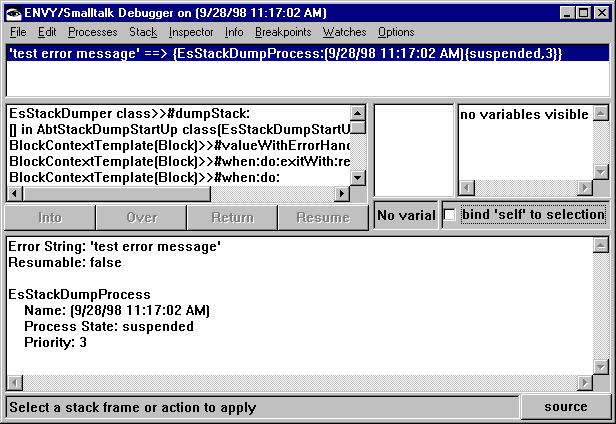Use the stack dump debugger to investigate the state of your image at the point of error. You cannot use it to alter the state of objects within that image. The process control buttons--Into, Over, Return, and Resume--are not available. All menu items pertaining to code evaluation, such as Execute and Display, are also not available.
|
1.
|
|
2.
|
You can view the source code provided the snapshot and the corresponding manager library have not changed and the development image is connected to the library. If the snapshot has been lost or if the library is not the same, the stack dump debugger works, but the method source is not displayed. Follow the steps for saving the snapshot described in Packaging a Smalltalk image.
The qualifier <Dumped> in the printed representation of an object serves as a reminder that the object is not active within the development image; a <dumped> object is a representation of the object that existed at the time of the Smalltalk error on the target platform.
|
•
|
|
•
|
|
•
|
|
2.
|
Select the self pseudo variable and inspect it.
|
|
3.
|
In the <Dumped> inspector, select the variable called globalNamespace and inspect it.
|
|
2.
|
In the class inspector, select the classPool variable and inspect it.
|
 Viewing stack dump files generated on differing UNIX platforms
Viewing stack dump files generated on differing UNIX platforms
